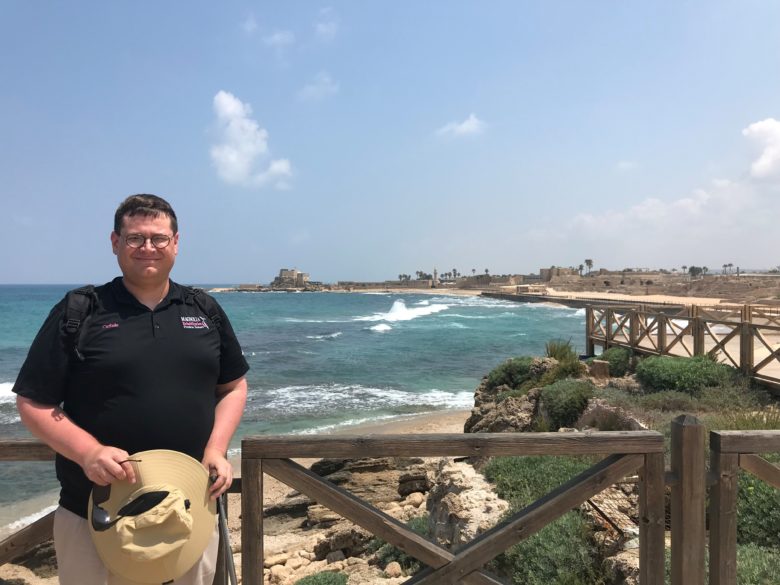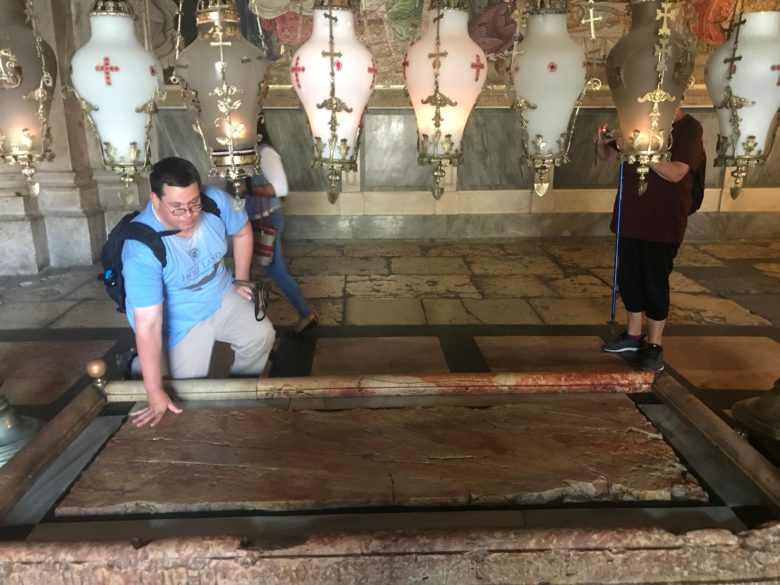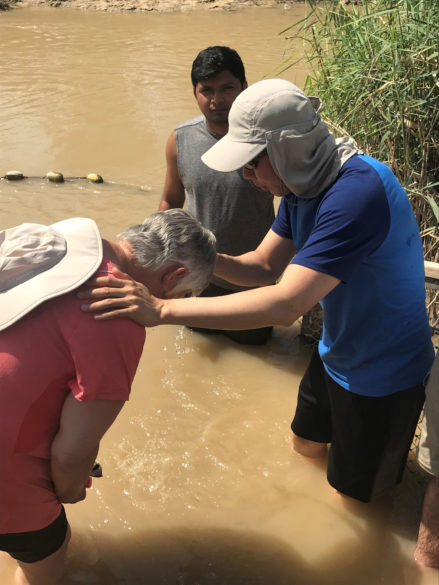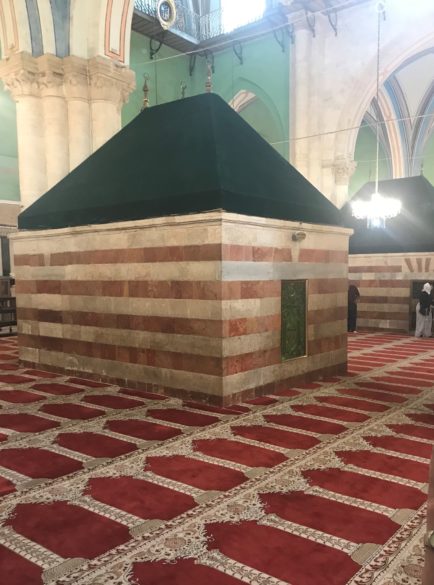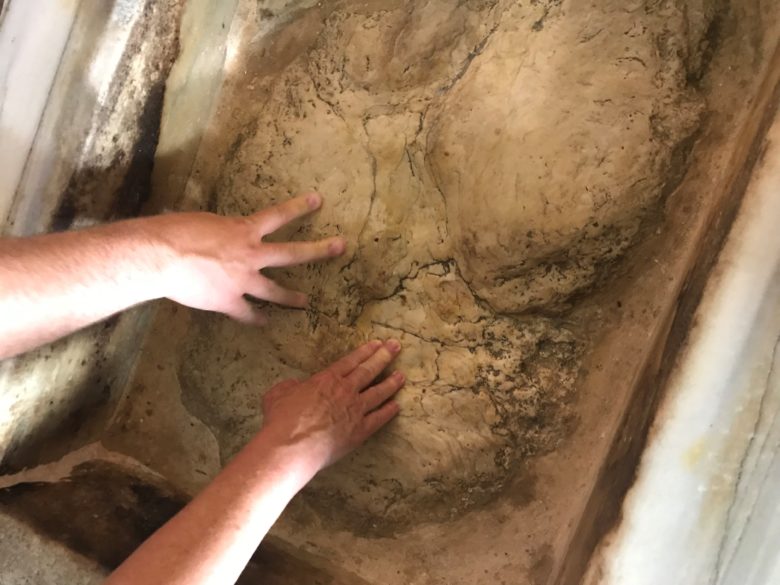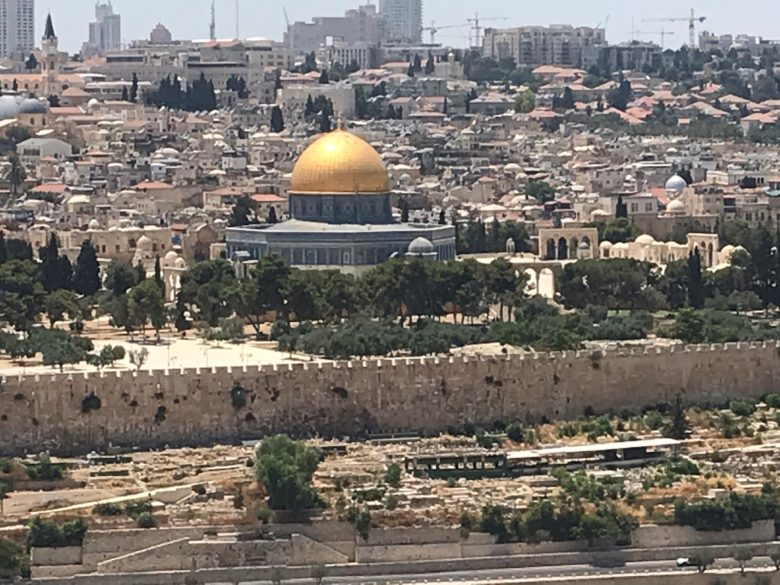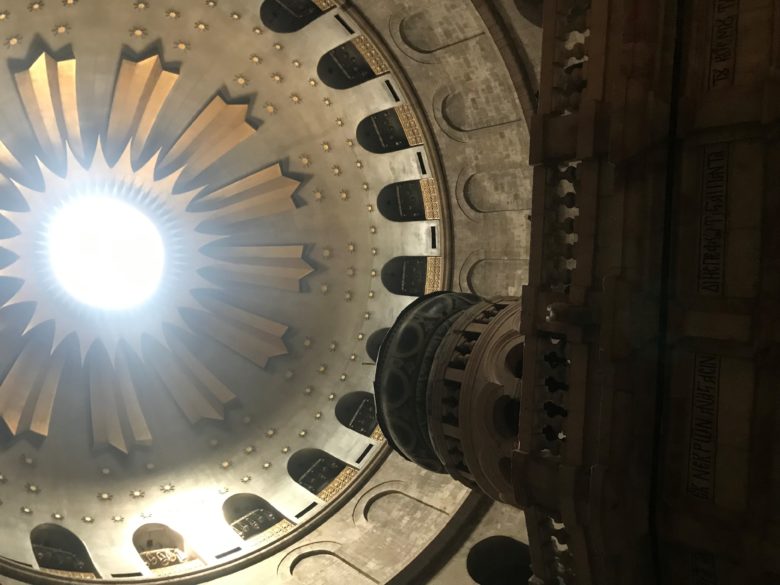From the Holy Land to Mississippi
REFLECTION
By Carlisle Beggerly
HOLY LAND – One of my favorite things about being Catholic is the church’s ancient devotion to holy relics. Over the years, I have been blessed to obtain quite a few of them. They range from pieces of bone from the bodies of saints to clothing that belonged to them to even articles associated with Christ Himself. The most prized relic of which I have custody is a tiny fragment of the True Cross of Our Lord, discovered by Saint Helena in the Holy Land when she made a pilgrimage there after her son’s conversion to Christianity.
This summer I was able to visit the same sites which Helena visited some 1,700 years ago and to obtain holy relics to bring back for veneration. Like her, this was not my only reason for going to the Holy Land. To walk in the footsteps of Christ draws the believer closer to the Lord and one cannot help but be transformed in some way by the experience. However, I wanted to recover physical, tangible reminders of those places in which God has made His presence known in a unique and corporeal way.
There are few places on earth where the very ground on which one walks is considered sacred. Lourdes, Fatima, the Catacombs of Rome perhaps come to mind. But nowhere is so holy as the land designated by the moniker Terra Sancta. Here, the Word was made flesh and dwelt among us. The Mother of God made her home here and raised up a son to be called the savior of the world.
The first stones I gathered were in Hebron, the location of the Oak of Mamre where all three Persons of the Trinity manifested themselves to Abraham. From here we went to the Cave of the Patriarchs, the resting place of Abraham, Sarah, Isaac and Jacob. The next day I found olive leaves in the City of David; a stone from Caiphas’s palace; and a piece of the Pool of Siloam where Our Lord healed the man born blind. I came upon a sliver of the cave in which Saint Gabriel announced to the Shepherds the birth of Jesus before serving Holy Mass at the Church of the Nativity. A friar gave me scrapings of the walls of the cave where Our Lady nursed the Lord before setting out for Egypt, a drop of her milk having turned the limestone thereof a brilliant, lactescent white when it fell to the ground.
Over the next days, I procured some stone from the Jordan River where the Lord was baptized and later gathered flowers on the Mount of the Beatitudes and the site of the miraculous multiplication of loaves and fishes. I gained a bit of the house of Saint Peter before traveling to Bethlehem where I collected pieces of Saint Joseph’s house and the grotto of the Annunciation.
After a week of archaeological excavation at a first century synagogue in the Golan Heights, I extracted a bit of the Mensa Christi, a makeshift stone table on which the Resurrected Lord cooked breakfast for His disciples along the shores of Galilee. On the following morning, I acquired stones from the site of the Transfiguration on Mount Tabor after serving at the Holy Sacrifice there. At Jericho, I picked up a rock from the stream St. Elisha made potable again by casting salt into it and a seed from a descendant of the Zacchaeus sycamore.
We then returned to Jerusalem where I was able to fetch a bit of Lazarus’s tomb before collecting relics from the site where Our Lord taught the Pater Noster and the place where He wept over Jerusalem. We went to the Garden of Gethsemane from which I plucked some olive leaves; took stone from the birthplace and location of the Dormition of Our Lady; the place of the Ascension; the Caenaculum; and King David’s tomb.
As my pilgrimage came to an end, while at Mass inside the Aedicule of the Holy Sepulchre, I managed to find a bit of stone which had come loose from the interior walls. It serves to remind me of the extraordinary moment when I received the Sacred Body of the Lord in Communion inside the tomb of His Resurrection. Here I also retrieved some rock from the recesses of the cavern in which Saint Helena found that holiest of relics, the True Cross.
I now write this back at home in Mississippi as I gaze at the two reliquaries containing the tiny treasures from my journey. Like Helena before me, I look on these relics with holy joy. They are more than mere souvenirs. They contain a bit of the sacred in a bodily form. They are blessed by the presence of God and His saints. They serve as a prompt to recall the memories of the countless pilgrims who have gone before me. They evoke a kind of anemnesis of the whole economy of salvation. The stones themselves remember and attest to the Glory of God and His Incarnation. My humble collection is a connection to the special place on this planet where the incorporeal God was made flesh. These are sacred gifts of a holy land that I will treasure for many years to come.
(Carlisle W. Beggerly is a seminarian for the Diocese of Jackson studying at Notre Dame Seminary, New Orleans after studies in Sacred Heart Seminary and School of Theology in Franklin, Wis.)

